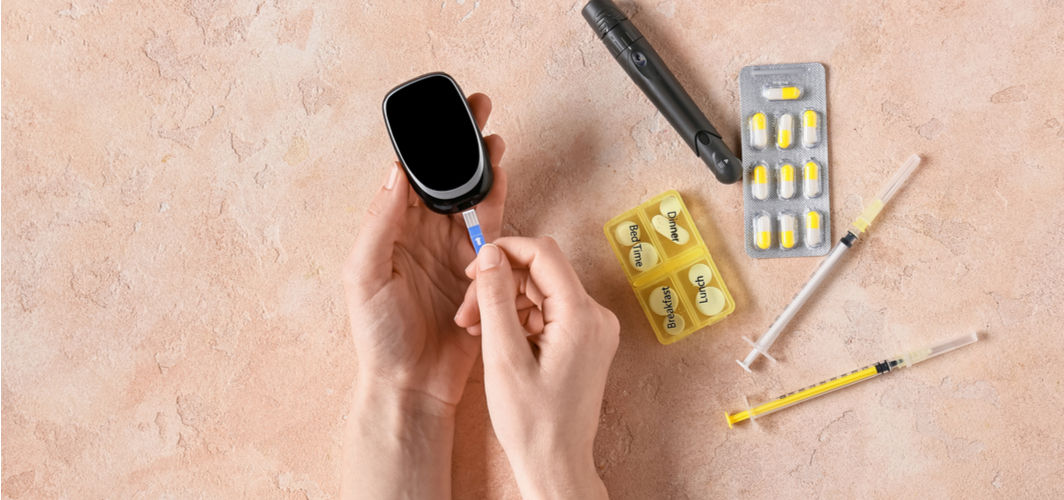Diabetes Management
Diabetic Neuropathy: Why the Burning Sensation in Your Feet Should Not be Ignored?
3 min read
By Apollo 24/7, Published on - 05 December 2020, Updated on - 27 August 2023
Share this article
1
9 likes

What is diabetic neuropathy?
- Sensory neuropathy: Damage to the nerves that detect touch and temperature - commonly affects the feet and hands.
- Motor neuropathy: Damage to the nerves that help in muscle movement.
- Autonomic neuropathy: Damage to the nerves that control involuntary actions of the body such as digestion.
What are the signs of diabetic neuropathy?
- Numbness, especially in the extremities, i.e., toes, fingers
- Tingling sensation
- Pain in the body
- Weakness in the limbs
- Difficulties with walking, balance, and coordination
- Loss of muscle mass in the feet, legs, hands, and hips
Who is more likely to get diabetic neuropathy?
- Poorly controlled diabetes
- Weight issues
- High blood pressure
- Age above 40 years
- High levels of triglycerides
- Habits such as smoking and consuming alcohol
- Chronic liver or kidney disease
- Vitamin B deficiency
- Prolonged diabetes (living with diabetes for a long period of time)
- Other diseases and anti-cancer drugs
- Coronary heart disease or other heart condition.
Can diabetic neuropathy be prevented?
- Adhere to the medications prescribed by the doctor
- Follow healthy eating habits and consume whole, nutritious food
- Limit the consumption of high-fat and high-calorie processed foods
- Reduce salt consumption to keep blood pressure in the normal range
- Take up some form of moderate-intensity exercise such as brisk walking, riding a bicycle or swimming to stay physically active
- Quit smoking to reduce the risk of neuropathy
- Significantly reduce the consumption of alcohol.
- Examine the feet every day for any red spots, cuts, swellings or blisters
- Nails of the feet should be cut and trimmed carefully
- Pat dry the feet after bathing and moisturize them later
- Wear well-fitted shoes and wear thick, soft, seamless socks along with them.
Takeaway
Diabetes Management
Consult Top Neurologists
View AllLeave Comment
Recommended for you

Diabetes Management
How Does Vitamin D Benefit People with Diabetes?
Vitamin D offers several health benefits for individuals with diabetes. It plays a crucial role in improving insulin sensitivity, which further helps in regulating blood sugar levels more effectively. Adequate vitamin D levels in your body may also reduce the risk of developing type 2 diabetes. Vitamin D's role in regulating calcium absorption is crucial for insulin and glucose uptake.

Diabetes Management
Can People with Diabetes Consume Low Calorie Sweeteners?
Common low-calorie sweeteners approved by the FDA include aspartame, acesulfame potassium, saccharin, sucralose, stevia, advantame, and neotame. Though artificial sweeteners are considered safe, long-term or excessive use may have side effects such as altered taste buds, increased cravings for sweets, and a potential association with weight gain, metabolic syndrome, and type 2 diabetes. Consulting with a dietician can help in managing blood sugar levels effectively.

Diabetes Management
Can Air Pollution Cause Diabetes?
Multiple studies have found a link between air pollution and an increased risk of developing diabetes. Long-term exposure to particulate matter (PM) such as PM2.5 and PM10 has been associated with a higher prevalence of type 2 diabetes. However, the exact mechanisms by which poor air quality contributes to diabetes risk are still being researched.
Subscribe
Sign up for our free Health Library Daily Newsletter
Get doctor-approved health tips, news, and more.
Visual Stories

8 Fruits That are Incredibly Healthy for Diabetes
Tap to continue exploring
Recommended for you

Diabetes Management
How Does Vitamin D Benefit People with Diabetes?
Vitamin D offers several health benefits for individuals with diabetes. It plays a crucial role in improving insulin sensitivity, which further helps in regulating blood sugar levels more effectively. Adequate vitamin D levels in your body may also reduce the risk of developing type 2 diabetes. Vitamin D's role in regulating calcium absorption is crucial for insulin and glucose uptake.

Diabetes Management
Can People with Diabetes Consume Low Calorie Sweeteners?
Common low-calorie sweeteners approved by the FDA include aspartame, acesulfame potassium, saccharin, sucralose, stevia, advantame, and neotame. Though artificial sweeteners are considered safe, long-term or excessive use may have side effects such as altered taste buds, increased cravings for sweets, and a potential association with weight gain, metabolic syndrome, and type 2 diabetes. Consulting with a dietician can help in managing blood sugar levels effectively.

Diabetes Management
Can Air Pollution Cause Diabetes?
Multiple studies have found a link between air pollution and an increased risk of developing diabetes. Long-term exposure to particulate matter (PM) such as PM2.5 and PM10 has been associated with a higher prevalence of type 2 diabetes. However, the exact mechanisms by which poor air quality contributes to diabetes risk are still being researched.
